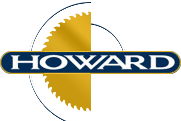In the dynamic realm of aerospace engineering, the choice of materials plays a pivotal role in achieving optimal performance. One such material that has garnered significant attention is 6061-T651 aluminum. Renowned for its high strength, strong corrosion resistance, and excellent weldability, this aerospace-grade aluminum alloy has become a cornerstone in various aerospace applications. At Howard Precision Metals, we are your premier source for 6061-T651 aluminum plates to meet your aerospace application needs.
6061-T651 Key Characteristics
High Strength: 6061-T651 aluminum possesses a remarkable tensile strength of 310 MPa and a yield strength of 276 MPa, making it a robust material for applications involving high stresses.
Weldability: Recognized for its excellent weldability, this alloy is a preferred option for applications that require seamless joining or welding processes.
Corrosion Resistance: With solid corrosion resistance, 6061-T651 aluminum plates function with resilience in harsh environmental conditions, reflecting their durability over time.
Machinability: The superior machinability of 6061-T651 enables easy shaping and the production of complex designs, making it a adaptable choice for aerospace components.
Aerospace Applications
Aircraft Structures
6061-T651 aluminum plays a key role in the construction of aircraft structures. Its high strength-to-weight ratio is particularly beneficial, providing structural integrity while falling within stringent weight limitations.
Fuselage Frames
As the core structure of an aircraft, the fuselage requires materials that can withstand varying stress levels. 6061-T651 aluminum plates are an effective choice for building fuselage frames due to the optimal balance they possess between weight and strength.
Wing Skins and Spars
In the aerospace industry, where every ounce matters, 6061-T651 finds application in the manufacture of spars and wing skins. Due to its significant strength and lightweight nature, it is highly viable as a contributor to the efficient functioning of aircraft wings.
Helicopter Rotor Hubs
Helicopter rotor hubs require materials having exceptional durability and strength. 6061-T651, with its high tensile strength, is key in ensuring the consistency of these crucial components.
Missile Components
In the realm of aerospace and defense, reliability and precision are of premier importance. 6061-T651 aluminum finds application in the manufacture of missile components, with its corrosion resistance and high strength being critical factors that benefit this application.
Structural Components
Across various aerospace applications, structural components such as braces, beams, and connectors benefit from the mechanical capabilities of 6061-T651 aluminum plates. The capacity of this alloy to withstand stress makes it a preferred option for preserving structural integrity.
What Sets 6061-T651 Aluminum Apart?
Exceptional Strength and Durability
The 6061-T651 extruded aluminum alloy is known for its strength, comparable to many steels. With a yield strength of 40,000 psi and a tensile strength of 45,000 psi, it proves suitable for structural applications in the aerospace industry.
Corrosion Resistance
Corrosion can be a formidable opponent in aerospace environments. 6061-T651 aluminum excels in this regard, developing a protective oxide layer on its surface that ensures long-term service even in marine or harsh outdoor settings.
Machinability
6061-T651 aluminum plates offer the significant advantage of easy machining, which allows for smoother drilling, cutting, and forming into various shapes. This property is especially beneficial for manufacturers in the automotive, aerospace, and consumer electronics sectors.
Weldability
6061-T651 aluminum lends itself well to various welding methods, including MIG and TIG welding. Proper filler material selection and preparation are vital for successful welds, and post-weld heat treatment can restore the strength of the material.
Heat Treatment
The T6 tempering process which involves solution heat treatment, aging, and quenching significantly increases the hardness, strength, hardness, and deformation resistance of the alloy. This makes 6061-T651 aluminum a strong choice for aerospace applications.
Formability
6061 aluminum plate is easily formed, drilled, and bent, allowing for the production of various spacecraft structures and shapes.
Joining Capabilities: This alloy is easily joined utilizing various welding methods, enhancing the sealing performance of aerospace spacecraft.
Reduced Weight: With lower density compared to many other metals, 6061 aluminum plate contributes to reducing the weight of spacecraft, a critical factor in aerospace design.
Good Electrical Conductivity: Possessing good electrical conductivity, 6061-T651 aluminum finds application in aircraft conductive equipment.
Varied Forms for Diverse Aerospace Needs
6061-T651 Aluminum Sheet Plate
This is the stress-release version of T6 temper, offering enhanced stress corrosion resistance. It is commonly used for aerospace fuel tanks, airframe casings, and hydraulic systems.
6061-T6 Aluminum Sheet Plate
This is the most common temper, featuring hardness and high strength. It is utilized in wings, fuselage structures, landing gears, engine components, and parts that require rigidity and high strength.
6061-O Aluminum Sheet Plate
This is the annealed temper with lower strength and hardness. It is commonly used for lightweight aerospace internal components, assemblies, and bulkheads.
6061-T4 Aluminum Sheet Plate
This is the heat-treated temper with moderate hardness and strength. It is ideal for aerospace applications that require moderate strength, such as cabin components and containers.
The aerospace industry’s demanding requirements find a reliable solution in 6061-T651 aluminum plates. Their exceptional strength, solid corrosion resistance, weldability, and machinability, make them a versatile choice for a wide array of applications. As aerospace technology continues to advance, the significance of materials such as 6061-T651 aluminum else ensure performance, reliability, and efficiency.
Are you ready to explore the benefits of 6061-T651 aluminum for your aerospace applications? Give us a call today at 866.602.3788 or request a quote through our website. Our team is dedicated to providing you with the aluminum alloys that help you achieve optimum quality for your aerospace component needs.



